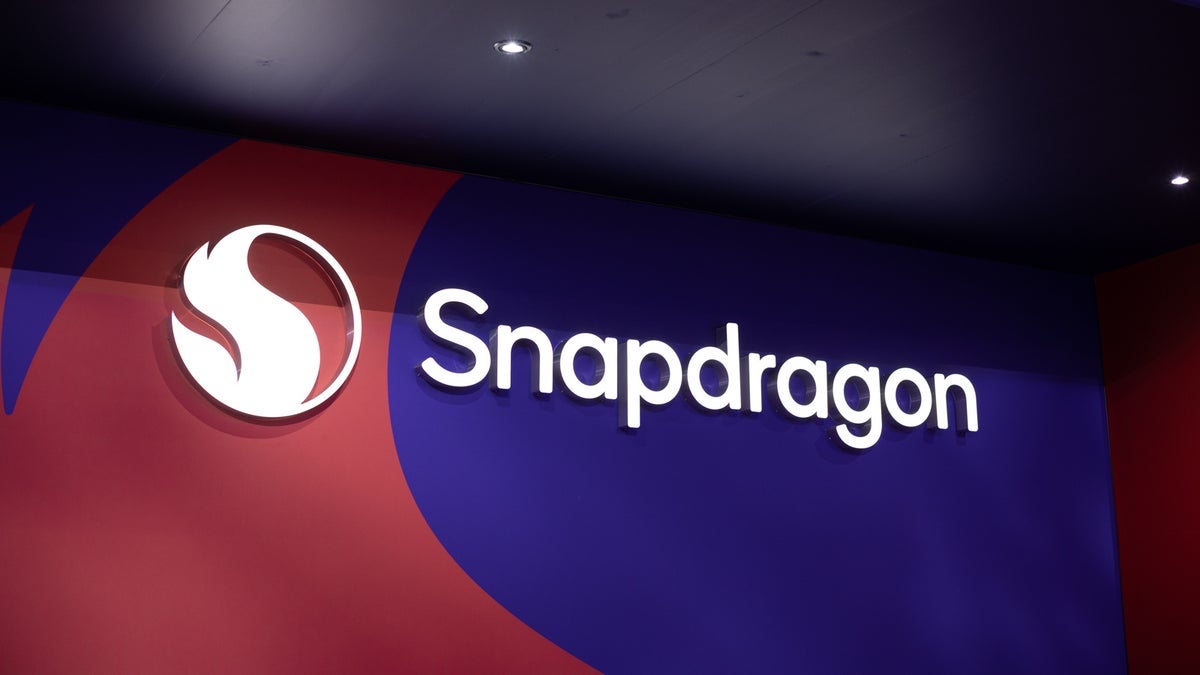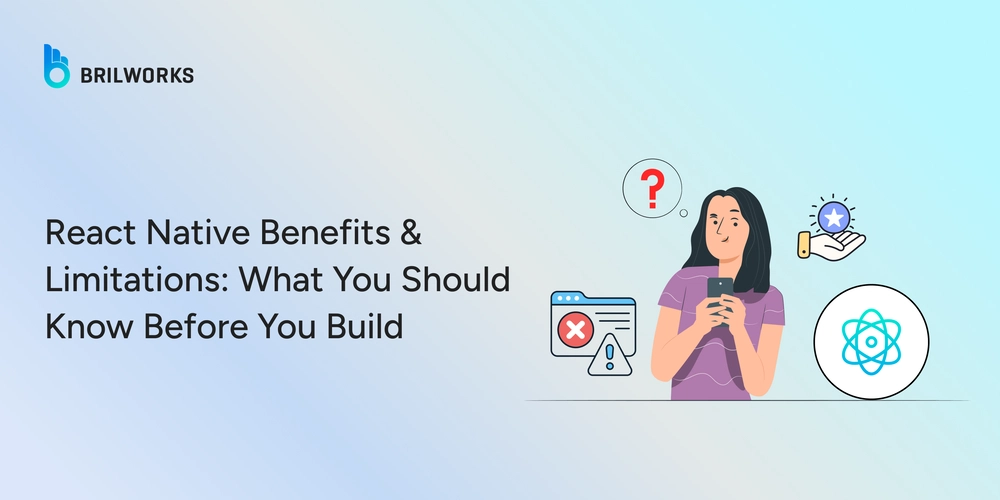5 Signs Your Business is Ready for AI (And How to Start)
In today's rapidly evolving business landscape, artificial intelligence (AI) has transitioned from a futuristic concept to a crucial competitive advantage. According to recent research, AI adoption among businesses has increased from 50% to 72% in just six years, with 92.1% of businesses reporting significant returns on their AI investments in 2023. However, despite the clear benefits, many organizations struggle to determine if they're truly ready for AI implementation. This comprehensive guide explores the five key indicators that your business is prepared for AI adoption and provides practical steps to begin your AI journey successfully. Sign 1: Clear Business Objectives and Defined Problems The first and most crucial sign that your business is ready for AI is having well-defined business objectives and specific problems that AI can solve. Implementing AI without clear goals is like embarking on a journey without a destination – it may be interesting, but it's unlikely to be productive. Why This Matters: AI is not a solution looking for a problem; it's a powerful tool that should address specific business challenges. Organizations that successfully implement AI typically start with clearly defined objectives tied to measurable key performance indicators (KPIs). What to Look For: You can articulate specific business challenges that could benefit from automation, data analysis, or prediction Your objectives are specific, measurable, and aligned with broader business goals You have identified processes where AI could create tangible value (e.g., reducing customer churn, optimizing inventory, improving lead conversion) You have established metrics to measure the success of AI initiatives As ClearPoint Digital notes, "Without well-defined objectives and KPIs, it's impossible to measure the impact of AI on your business and determine whether your investment is delivering the expected returns." Sign 2: High-Quality, Accessible Data AI systems are only as good as the data they're trained on. The second sign of AI readiness is having sufficient high-quality, relevant data that's properly organized and accessible. Why This Matters: AI algorithms learn from historical data to make predictions and recommendations. If your data is insufficient, inaccurate, or poorly organized, even the most sophisticated AI solutions will deliver subpar results. What to Look For: Your organization collects and stores relevant data for the problems you want to solve Data is structured, standardized, and properly labeled You have sufficient volume of data for training AI models Your data is accessible to the teams who would implement AI You have proper data governance practices in place According to NexusTek, "High-quality, structured, and standardized data with strong governance and secure pipelines are crucial for successful AI implementation." Organizations with robust data infrastructure and governance practices are better positioned to leverage AI effectively. Sign 3: Executive Buy-In and Strategic Alignment The third sign of AI readiness is having support from leadership and ensuring AI initiatives align with your overall business strategy. Why This Matters: AI implementation often requires significant resources, cultural changes, and sometimes reorganization of workflows. Without executive support and strategic alignment, AI initiatives are likely to be underfunded, deprioritized, or abandoned altogether. What to Look For: Leadership understands the potential benefits and limitations of AI There's a willingness to allocate necessary resources (budget, personnel, time) to AI initiatives AI objectives are aligned with the company's strategic vision There's a culture of innovation and willingness to experiment Leadership is prepared for the organizational changes that AI might bring As one industry expert notes, "Executive buy-in and resource allocation to support the strategic shift towards AI adoption is crucial for success." Without this support, even the most promising AI projects may struggle to gain traction. Sign 4: Technical Infrastructure and Expertise The fourth sign of AI readiness is having the necessary technical infrastructure and access to AI expertise, either in-house or through partnerships. Why This Matters: AI implementation often requires specialized hardware, software, and technical knowledge. Organizations without the right infrastructure or expertise may struggle to implement and maintain AI solutions effectively. What to Look For: Your IT infrastructure can support the resource-intensive nature of AI models You have cloud or hybrid environments that can scale as needed Your organization has data scientists or partnerships with AI experts There's a team capable of implementing and managing AI systems You have the technical capability to integrate AI into ex

In today's rapidly evolving business landscape, artificial intelligence (AI) has transitioned from a futuristic concept to a crucial competitive advantage. According to recent research, AI adoption among businesses has increased from 50% to 72% in just six years, with 92.1% of businesses reporting significant returns on their AI investments in 2023. However, despite the clear benefits, many organizations struggle to determine if they're truly ready for AI implementation.
This comprehensive guide explores the five key indicators that your business is prepared for AI adoption and provides practical steps to begin your AI journey successfully.
Sign 1: Clear Business Objectives and Defined Problems
The first and most crucial sign that your business is ready for AI is having well-defined business objectives and specific problems that AI can solve. Implementing AI without clear goals is like embarking on a journey without a destination – it may be interesting, but it's unlikely to be productive.
Why This Matters:
AI is not a solution looking for a problem; it's a powerful tool that should address specific business challenges. Organizations that successfully implement AI typically start with clearly defined objectives tied to measurable key performance indicators (KPIs).
What to Look For:
- You can articulate specific business challenges that could benefit from automation, data analysis, or prediction
- Your objectives are specific, measurable, and aligned with broader business goals
- You have identified processes where AI could create tangible value (e.g., reducing customer churn, optimizing inventory, improving lead conversion)
- You have established metrics to measure the success of AI initiatives
As ClearPoint Digital notes, "Without well-defined objectives and KPIs, it's impossible to measure the impact of AI on your business and determine whether your investment is delivering the expected returns."
Sign 2: High-Quality, Accessible Data
AI systems are only as good as the data they're trained on. The second sign of AI readiness is having sufficient high-quality, relevant data that's properly organized and accessible.
Why This Matters:
AI algorithms learn from historical data to make predictions and recommendations. If your data is insufficient, inaccurate, or poorly organized, even the most sophisticated AI solutions will deliver subpar results.
What to Look For:
- Your organization collects and stores relevant data for the problems you want to solve
- Data is structured, standardized, and properly labeled
- You have sufficient volume of data for training AI models
- Your data is accessible to the teams who would implement AI
- You have proper data governance practices in place
According to NexusTek, "High-quality, structured, and standardized data with strong governance and secure pipelines are crucial for successful AI implementation." Organizations with robust data infrastructure and governance practices are better positioned to leverage AI effectively.
Sign 3: Executive Buy-In and Strategic Alignment
The third sign of AI readiness is having support from leadership and ensuring AI initiatives align with your overall business strategy.
Why This Matters:
AI implementation often requires significant resources, cultural changes, and sometimes reorganization of workflows. Without executive support and strategic alignment, AI initiatives are likely to be underfunded, deprioritized, or abandoned altogether.
What to Look For:
- Leadership understands the potential benefits and limitations of AI
- There's a willingness to allocate necessary resources (budget, personnel, time) to AI initiatives
- AI objectives are aligned with the company's strategic vision
- There's a culture of innovation and willingness to experiment
- Leadership is prepared for the organizational changes that AI might bring
As one industry expert notes, "Executive buy-in and resource allocation to support the strategic shift towards AI adoption is crucial for success." Without this support, even the most promising AI projects may struggle to gain traction.
Sign 4: Technical Infrastructure and Expertise
The fourth sign of AI readiness is having the necessary technical infrastructure and access to AI expertise, either in-house or through partnerships.
Why This Matters:
AI implementation often requires specialized hardware, software, and technical knowledge. Organizations without the right infrastructure or expertise may struggle to implement and maintain AI solutions effectively.
What to Look For:
- Your IT infrastructure can support the resource-intensive nature of AI models
- You have cloud or hybrid environments that can scale as needed
- Your organization has data scientists or partnerships with AI experts
- There's a team capable of implementing and managing AI systems
- You have the technical capability to integrate AI into existing systems
According to NexusTek, "The IT infrastructure must support the resource-intensive nature of AI models, ideally using cloud-based, hybrid, or colocation environments." Organizations with robust, scalable infrastructure are better positioned to implement AI successfully.
Sign 5: Responsible Governance and Ethical Framework
The final sign of AI readiness is having a framework for responsible AI governance and ethical considerations.
Why This Matters:
As AI becomes more integrated into business operations, issues like bias, privacy, security, and transparency become increasingly important. Organizations that proactively address these concerns are better positioned to implement AI responsibly and sustainably.
What to Look For:
- Your organization has considered ethical implications of AI use
- There are protocols for addressing bias in AI systems
- You have policies for ensuring data privacy and security
- There's transparency about how AI is used within the organization
- You have a framework for monitoring and evaluating AI systems
ClearPoint Digital emphasizes that "responsible governance to ensure ethical and effective use of AI" is a key indicator of business readiness. Organizations that neglect these considerations may face reputational damage, legal issues, or other serious consequences.
How to Start Implementing AI in Your Business
Once you've determined that your business is ready for AI, the next step is to begin implementation. Here's a practical roadmap to get started:
1. Identify Specific Use Cases
Begin by identifying specific, high-value use cases where AI can make a meaningful impact on your business. Focus on areas where:
- There are repetitive, time-consuming tasks that could be automated
- Large volumes of data need to be analyzed quickly
- There's potential for significant cost savings or revenue growth
- Customer experience could be dramatically improved
Examples include automating data entry, implementing chatbots for customer service, using predictive analytics for inventory management, or leveraging AI for personalized marketing.
2. Start Small with Pilot Projects
Rather than attempting a company-wide AI transformation, start with small, manageable pilot projects that:
- Can demonstrate value quickly
- Have clearly defined success metrics
- Involve minimal disruption to existing processes
- Require reasonable investment
As CEI America advises, "Start with pilot projects to test and refine your approach" before scaling more broadly. This approach allows you to learn, iterate, and build confidence before making larger investments.
3. Build or Expand Your Data Infrastructure
Strengthen your data foundation by:
- Auditing existing data for quality and relevance
- Implementing data governance policies
- Establishing data collection and storage protocols
- Creating systems for data cleaning and preparation
- Ensuring data security and compliance with regulations
Neurond emphasizes that "evaluating AI readiness" includes assessing the state of your data infrastructure and addressing any gaps before implementation.
4. Assemble the Right Team
Successful AI implementation requires a multidisciplinary team with diverse skills. Consider:
- Data scientists who can develop and train AI models
- Engineers who can integrate AI into existing systems
- Domain experts who understand business problems
- Project managers who can coordinate implementation
- Change management specialists who can facilitate adoption
If you don't have these skills in-house, consider partnerships with AI vendors, consultants, or specialized agencies.
5. Develop a Comprehensive AI Strategy
Create a detailed AI strategy that includes:
- Short-term and long-term objectives
- Resource allocation plan (budget, personnel, technology)
- Timeline for implementation
- Approach to measuring ROI
- Governance framework for responsible AI use
- Plan for scaling successful pilots across the organization
IBM notes that "a well-defined artificial intelligence strategy" serves as "a roadmap for using AI to improve data analysis, efficiency, supply chains, customer experience, and more."
6. Invest in Training and Change Management
Prepare your organization for AI adoption by:
- Educating employees about AI capabilities and limitations
- Providing training on new tools and workflows
- Addressing concerns about job displacement
- Creating a culture that embraces innovation and change
- Celebrating early wins to build momentum
Vistage emphasizes the importance of establishing clear AI use policies that "define acceptable AI tools, specify who has access to them, and set boundaries to protect sensitive data."
7. Implement, Measure, and Iterate
As you implement AI solutions:
- Continuously monitor performance against established KPIs
- Gather feedback from users and stakeholders
- Identify areas for improvement
- Iterate on your approach based on what you learn
- Document best practices and lessons learned
Remember that AI implementation is a journey, not a destination. Successful organizations approach it as an ongoing process of learning and improvement.
Conclusion
AI adoption is no longer a question of if, but when. Organizations that recognize the signs of AI readiness and take a strategic approach to implementation are positioned to reap significant benefits in efficiency, innovation, and competitive advantage.
By focusing on clear objectives, quality data, executive support, technical readiness, and responsible governance, businesses can lay a solid foundation for successful AI adoption. Starting with well-defined use cases, running targeted pilots, and building capacity over time allows organizations to implement AI in a way that creates sustainable value.
As you consider your organization's AI journey, remember that success comes not from adopting the most advanced technology, but from thoughtfully applying the right solutions to your most important business challenges.





































































































































































![[The AI Show Episode 145]: OpenAI Releases o3 and o4-mini, AI Is Causing “Quiet Layoffs,” Executive Order on Youth AI Education & GPT-4o’s Controversial Update](https://www.marketingaiinstitute.com/hubfs/ep%20145%20cover.png)




























































































































![[DEALS] Microsoft 365: 1-Year Subscription (Family/Up to 6 Users) (23% off) & Other Deals Up To 98% Off – Offers End Soon!](https://www.javacodegeeks.com/wp-content/uploads/2012/12/jcg-logo.jpg)




![From Art School Drop-out to Microsoft Engineer with Shashi Lo [Podcast #170]](https://cdn.hashnode.com/res/hashnode/image/upload/v1746203291209/439bf16b-c820-4fe8-b69e-94d80533b2df.png?#)




















![Re-designing a Git/development workflow with best practices [closed]](https://i.postimg.cc/tRvBYcrt/branching-example.jpg)




















































































(1).jpg?#)






























_Inge_Johnsson-Alamy.jpg?width=1280&auto=webp&quality=80&disable=upscale#)































































































![The Material 3 Expressive redesign of Google Clock leaks out [Gallery]](https://i0.wp.com/9to5google.com/wp-content/uploads/sites/4/2024/03/Google-Clock-v2.jpg?resize=1200%2C628&quality=82&strip=all&ssl=1)
![What Google Messages features are rolling out [May 2025]](https://i0.wp.com/9to5google.com/wp-content/uploads/sites/4/2023/12/google-messages-name-cover.png?resize=1200%2C628&quality=82&strip=all&ssl=1)














![New Apple iPad mini 7 On Sale for $399! [Lowest Price Ever]](https://www.iclarified.com/images/news/96096/96096/96096-640.jpg)
![Apple to Split iPhone Launches Across Fall and Spring in Major Shakeup [Report]](https://www.iclarified.com/images/news/97211/97211/97211-640.jpg)
![Apple to Move Camera to Top Left, Hide Face ID Under Display in iPhone 18 Pro Redesign [Report]](https://www.iclarified.com/images/news/97212/97212/97212-640.jpg)
![Apple Developing Battery Case for iPhone 17 Air Amid Battery Life Concerns [Report]](https://www.iclarified.com/images/news/97208/97208/97208-640.jpg)



































































































